Click here and press the right key for the next slide (or swipe left)
also ...
Press the left key to go backwards (or swipe right)
Press n to toggle whether notes are shown (or add '?notes' to the url before the #)
Press m or double tap to slide thumbnails (menu)
Press ? at any time to show the keyboard shortcuts
Why Not Take ‘Shared Intention’ Literally?
‘shared’ 1 : Ayesha and her best friend have the same haircut
-> the Simple View
‘shared’ 2 : Ayesha and her brother share a mother
-> plural subject account (Schmid, Helm)
e.g. our volume, yours and mine, is approx 130 litres.
cf. our intention, yours and mine, is that we paint the house.

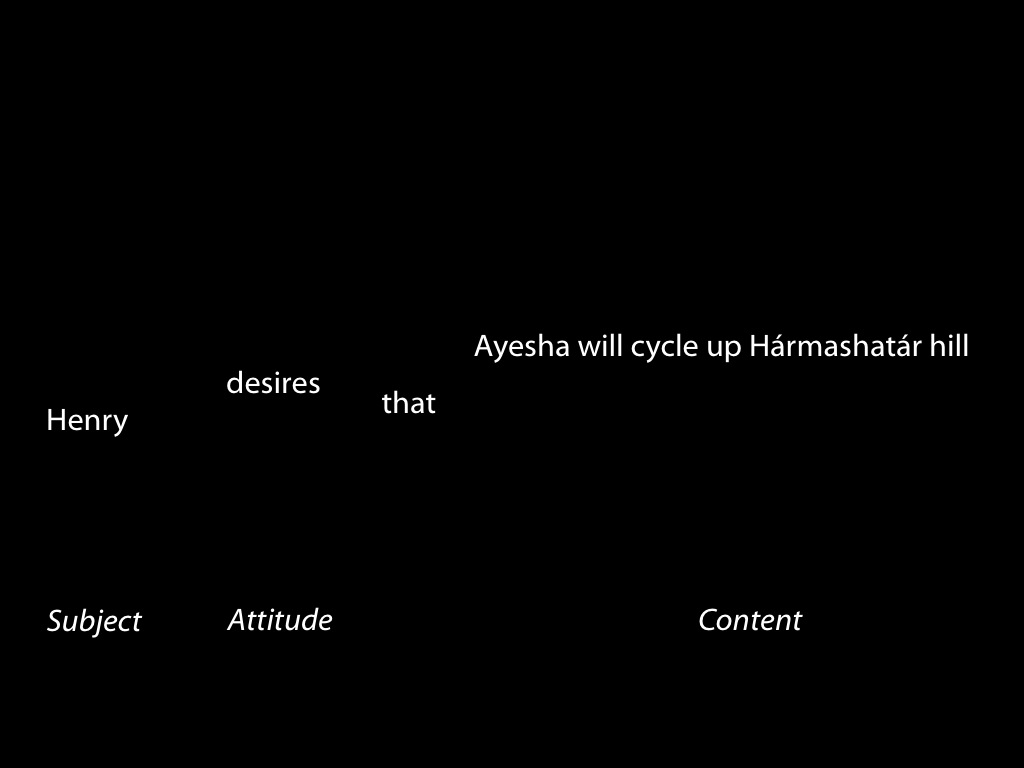
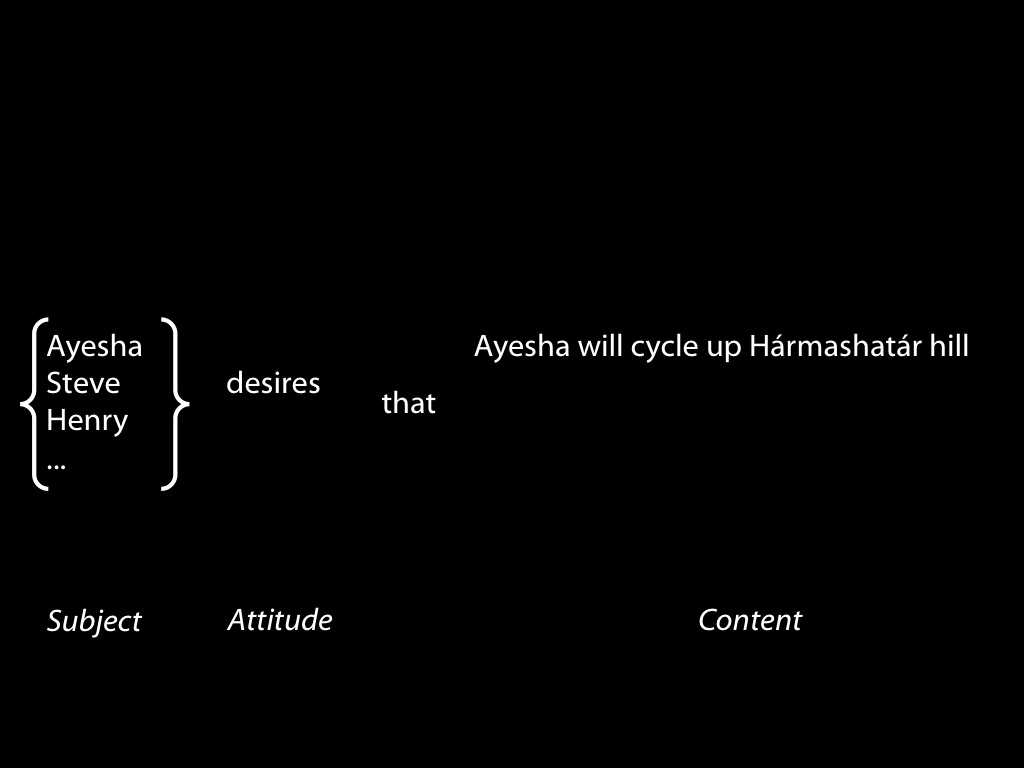
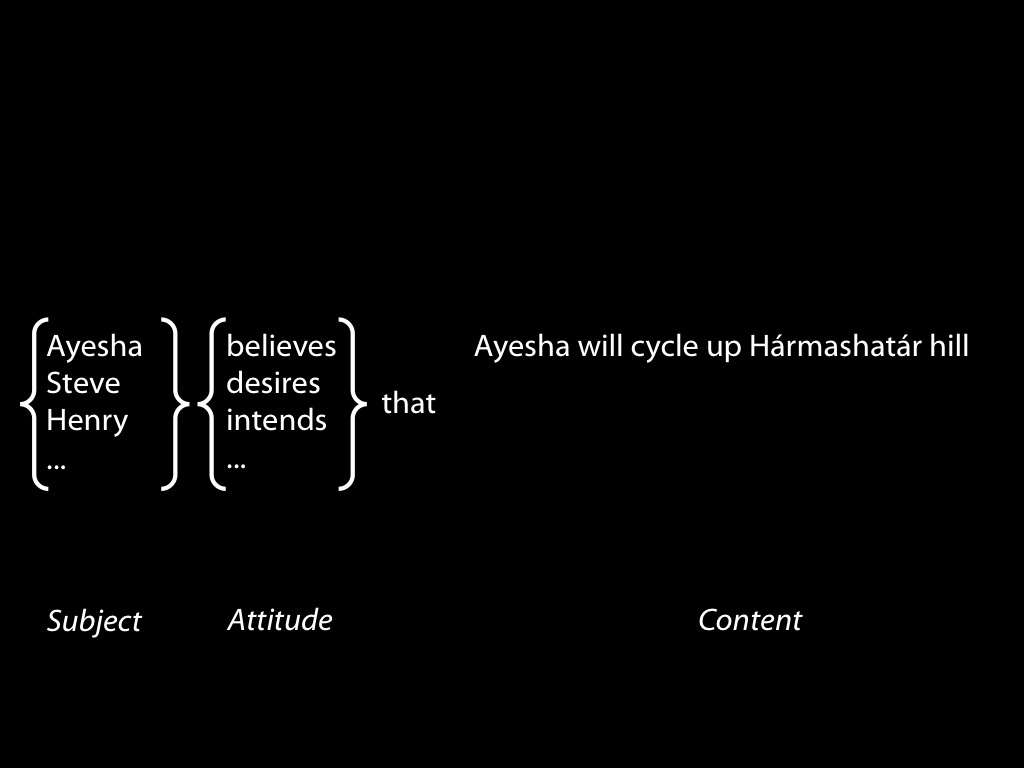
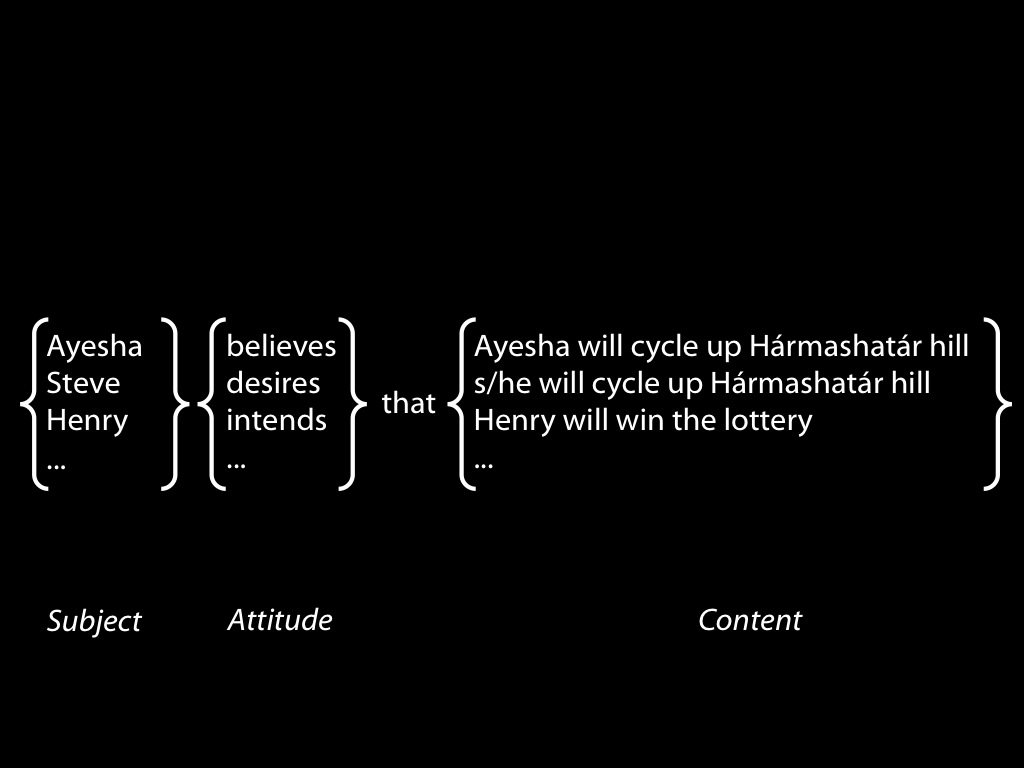
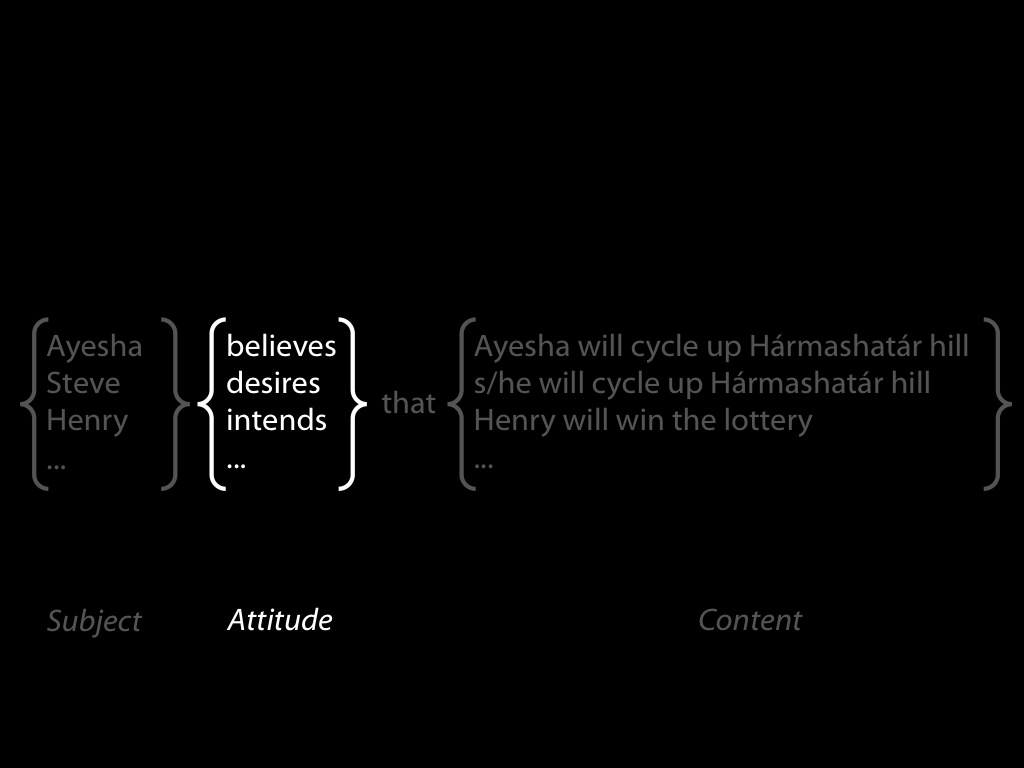
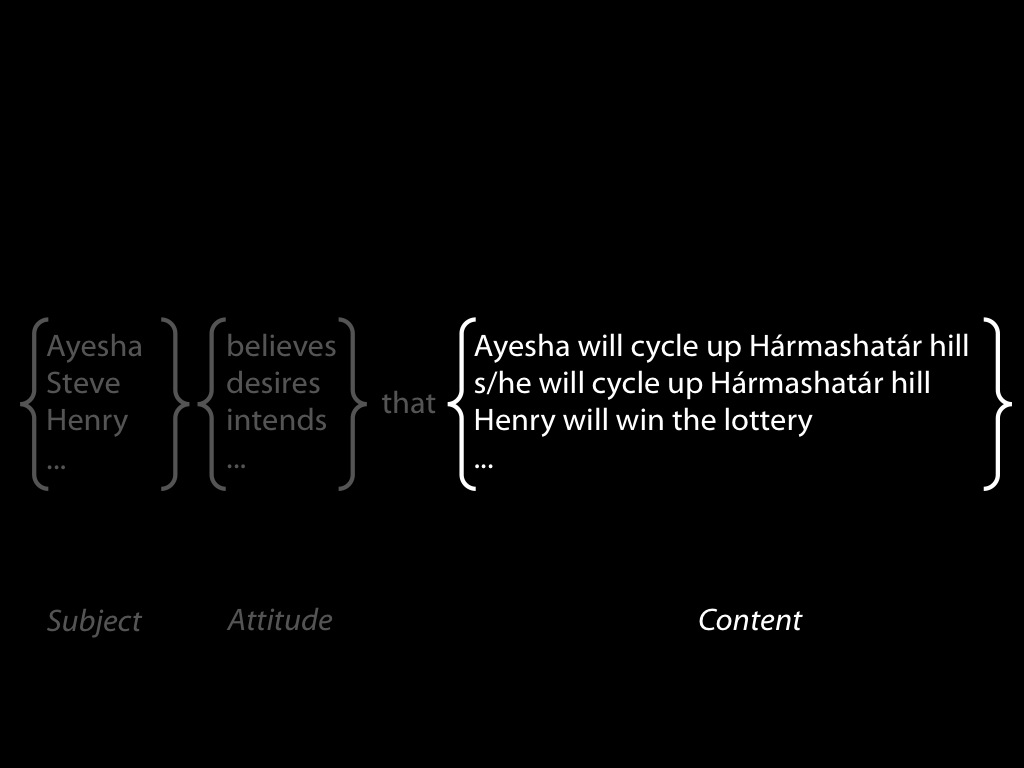

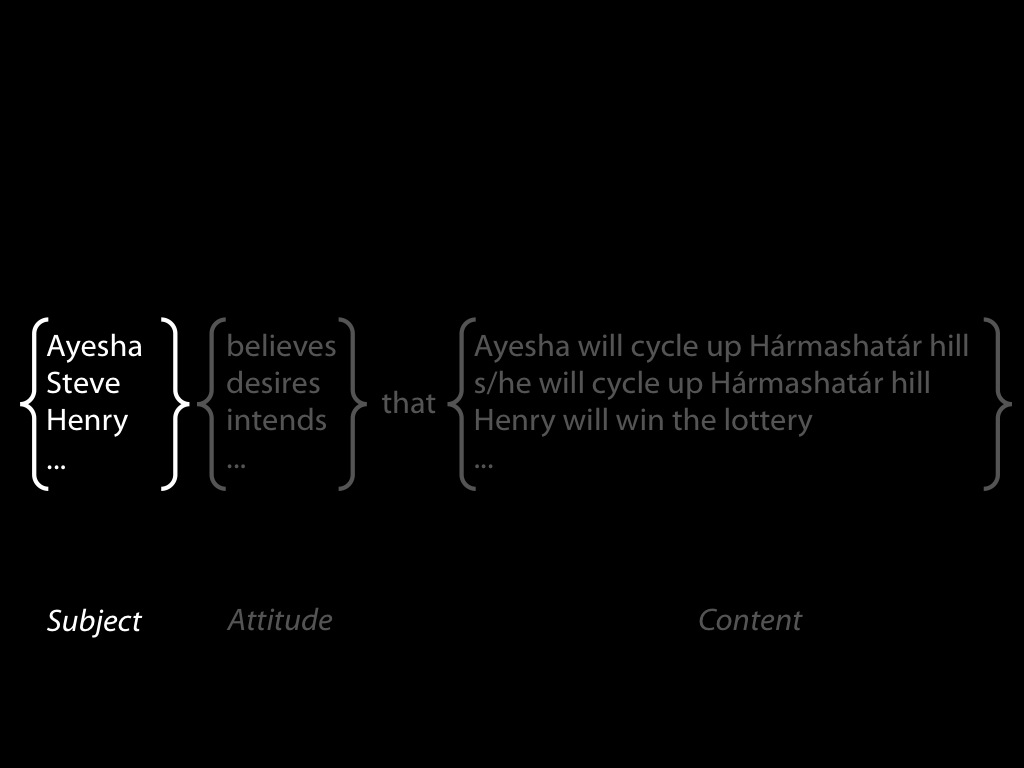
‘shared’ 1 : Ayesha and her best friend share a name
-> the Simple View
‘shared’ 2 : Ayesha and her brother share a mother
-> plural subject account
Can intentions have
plural subjects?
?
shared intention